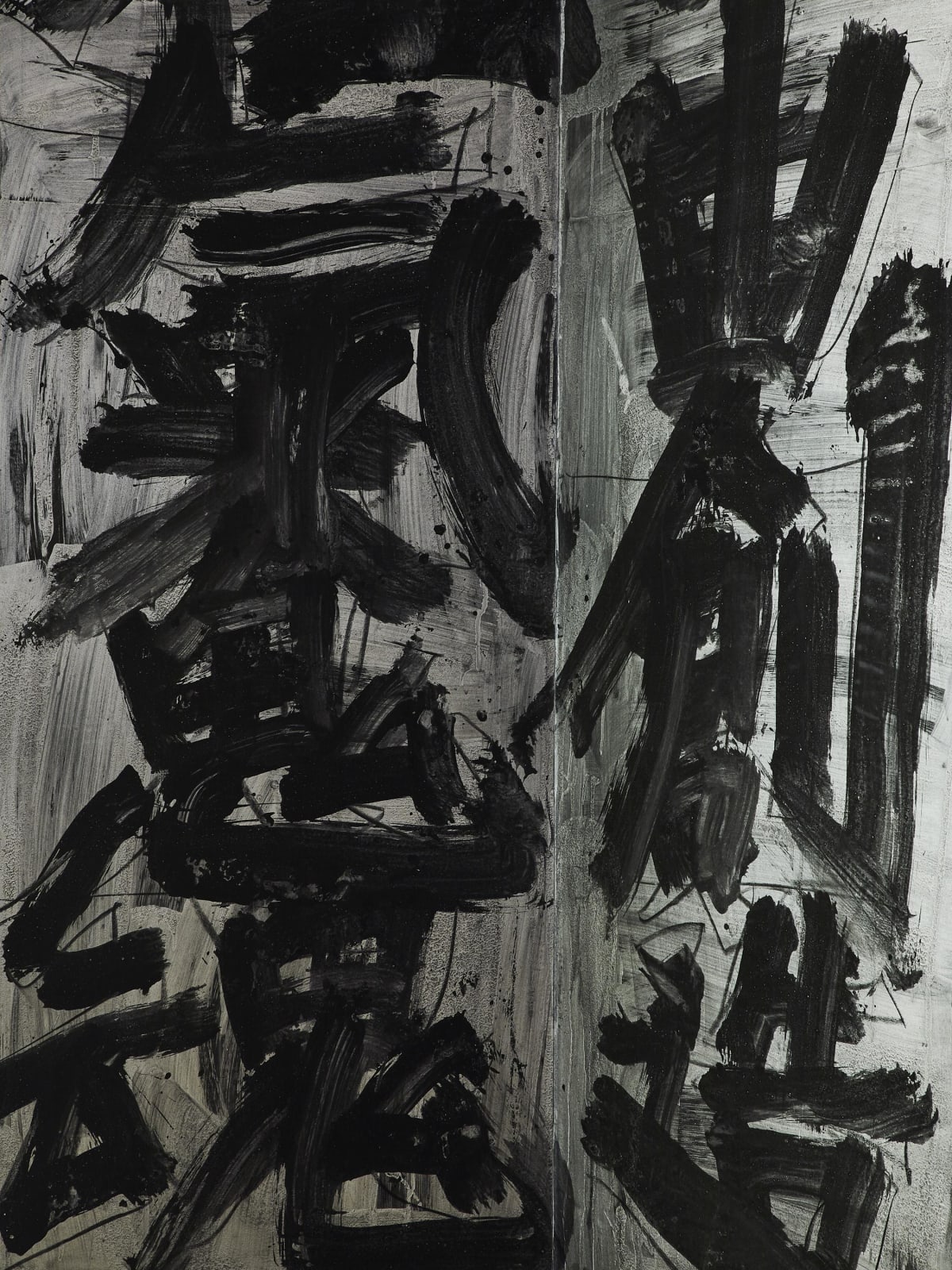Suda Kokuta (1906−1990)
Kū Ge Chū
Ink on paper, single six-panel folding screen
1988
With a label signed by the artist
172 x 378 cm (overall)
Further images
Ku, or the emptiness, Ge, or the nominal existence, and Chu, or the mean, are the triple truth of Tiantai school of Buddhism. Mohe zhiguan is the record of the lectures given on meditation by Zhiyi, the founder of Tiantai school, as well as the major text for the school. Those phrases carefully chosen shows Suda Kokuta mastered the Buddhist scriptures to a great extent. Hitei mujun refers to a state of contradictory; Genjo kahitsu is a phrase originally derived from the teaching by Dogen, the founder of Soto sect, connoting an idea of what is seen is not a full picture. Both Jiyu sozo (to create freely) and Kyoki kikon (a mad soul) are Suda’s fundamental attitudes toward the artistic making. The awareness of Suda’s awakening of the inner madness is the key to understand his creation.
Suda concerned himself with calligraphy around the 1950s. Though Suda issued many exceptional remarks on the subject from a painter’s perspective since the time, it was not until his late years that Suda concentrated on making his own calligraphic works. The present screen is a result of his lifelong devotion to delving into classics of all times as well as to establishing his own theory. The monochromatic and unyielding characters running all over the silver ground make the space overcrowded; it is Suda as a painter that is capable of reinterpreting the representation of characters from the form itself in such a way.
Suda Kokuta (yoga painter; 1906−1990)
Saitama-born yoga painter. His real name is Katsusaburo. Active in major exhibitions such as Bunten, Nitten, the Contemporary Art Exhibition of Japan, and other international exhibitions. His works are infused with ceaseless energy in a distinctive and vigorous style. Also worked in the medium of calligraphy and ceramics. Produced illustrations for a series of travel essays entitled Kaido wo yuku (On the highways) by Shiba Ryotaro, which won the Kodansha publishing culture award. Member of Kokuga-kai.
Suda concerned himself with calligraphy around the 1950s. Though Suda issued many exceptional remarks on the subject from a painter’s perspective since the time, it was not until his late years that Suda concentrated on making his own calligraphic works. The present screen is a result of his lifelong devotion to delving into classics of all times as well as to establishing his own theory. The monochromatic and unyielding characters running all over the silver ground make the space overcrowded; it is Suda as a painter that is capable of reinterpreting the representation of characters from the form itself in such a way.
Suda Kokuta (yoga painter; 1906−1990)
Saitama-born yoga painter. His real name is Katsusaburo. Active in major exhibitions such as Bunten, Nitten, the Contemporary Art Exhibition of Japan, and other international exhibitions. His works are infused with ceaseless energy in a distinctive and vigorous style. Also worked in the medium of calligraphy and ceramics. Produced illustrations for a series of travel essays entitled Kaido wo yuku (On the highways) by Shiba Ryotaro, which won the Kodansha publishing culture award. Member of Kokuga-kai.









